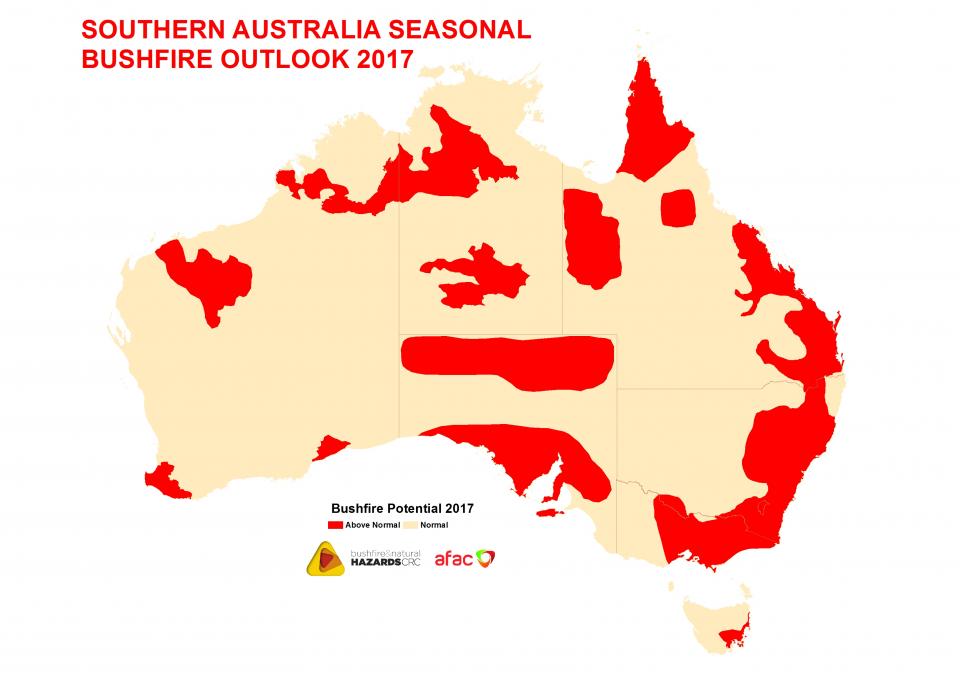The Relevance of Bushfire Administration in Fire Protection
In the realm of fire protection, the relevance of efficient bushfire management can not be understated. As neighborhoods worldwide grapple with enhancing instances of wildfires, the positive technique to stop and mitigating these natural catastrophes with strategic bushfire monitoring approaches has actually arised as an essential element. Past the instant risk to human life and building, the interaction between bushfire monitoring and ecological conservation, community participation, and environment change presents complicated challenges that demand thorough services.
Significance of Proactive Bushfire Avoidance
Aggressive bushfire prevention approaches are important in minimizing the ravaging impacts of wildfires on areas and ecological communities. One key facet of positive bushfire avoidance is fuel management.
Additionally, developing firebreaks - gotten rid of areas where vegetation is purposefully eliminated to produce a barrier to reduce or quit the development of a bushfire - is an additional essential proactive procedure. By applying these methods, the spread of wildfires can be limited, protecting both human lives and the setting. Moreover, educating the general public ablaze safety and security methods and promoting area recognition regarding the value of bushfire prevention are vital components of aggressive strategies. Inevitably, aggressive bushfire avoidance plays a considerable role in protecting communities and communities from the destructive influences of wildfires.
Role of Area Interaction in Fire Security
Engaging the area in fire protection initiatives is indispensable to enhancing the effectiveness of aggressive bushfire avoidance strategies. Neighborhood involvement plays a crucial role in fostering a cumulative understanding of the threats presented by bushfires and the relevance of preparedness actions. By involving neighborhood citizens, authorities can disseminate crucial info on fire security techniques, evacuation procedures, and very early caution systems, equipping individuals to take positive actions to guard their homes and lives.
By promoting a society of preparedness and collaboration, neighborhoods can reinforce their capacity to respond efficiently to bushfire emergencies, lessening the impact on buildings and lives. Ultimately, community interaction is a keystone of comprehensive fire security approaches, highlighting the importance of collective activity in protecting vulnerable areas from the danger of bushfires.
Importance of Wildlife Preservation in Bushfire Administration
Conservation of wildlife plays an important role in effective bushfire management approaches, making sure the protection of varied ecological communities and biodiversity in fire-prone areas. Wildlife preservation is vital as it adds to the total strength of communities, assisting in their ability to recuperate and hold up against from the effect of bushfires. By conserving environments and securing different varieties, the all-natural balance within these ecosystems is kept, which is essential for their long-lasting health and wellness and sustainability.
In addition, wild animals conservation likewise helps in minimizing the risk and intensity of bushfires. Healthy environments with well-preserved wildlife populations can work as natural firebreaks, reducing the spread of fires and limiting their devastating potential (BAL Assessment). Particular animal species, like burrowing pets or birds that spread out seeds, play special duties in aiding or avoiding fires in the post-fire regeneration of environments
Incorporating wild animals preservation into bushfire monitoring strategies is not only important for safeguarding biodiversity however also for promoting the total wellness and durability of environments despite increasing fire dangers.
Advantages of Strategic Fuel Decrease Programs
Purposefully executing fuel decrease programs is essential in reducing the threat and effect of bushfires in fire-prone areas. These programs include regulated burning, mechanical clearing up, and other techniques to decrease the amount of combustible vegetation available to sustain wildfires. By purposefully lowering fuel tons in key areas, such as near domestic neighborhoods or essential facilities, the intensity and spread of bushfires can be dramatically reduced.
One of the key benefits of fuel reduction programs is the enhancement of general fire durability in an ecosystem. By producing strategic gas breaks and lowering the continuity of plants, these programs aid to disrupt the course of a bushfire, go to the website making it simpler for firefighters to have and snuff out the blaze. Furthermore, gas decrease programs can safeguard biodiversity by avoiding exceedingly extreme fires that can ruin environments and threaten wildlife populations.
In addition, these programs can also secure human lives and property by reducing the threat of tragic fires that position a substantial threat to communities. Ultimately, strategic gas reduction programs play a critical role in proactive bushfire monitoring and promoting a more secure see page atmosphere for both people and nature.
Effect of Climate Change on Bushfire Threat

Greater temperature levels lead to drier vegetation, making it extra at risk to ignition. Reduced rains in certain regions extends dry spell conditions, additionally increasing the flammability of the landscape. In addition, the transforming climate has actually modified wind patterns and atmospheric problems, bring about even more unpredictable fire actions and rapid fire spread.
As the environment remains to alter, the regularity and intensity of bushfires original site are expected to climb, demanding a adaptive and positive strategy to bushfire monitoring. Strategies should develop to account for the transforming risk landscape, including climate forecasts and considering long-term strength in fire management preparation. Resolving the impact of climate change on bushfire danger is essential in establishing effective techniques to safeguard lives, property, and the atmosphere.
Verdict
Finally, positive bushfire prevention, neighborhood interaction, wildlife conservation, strategic fuel reduction programs, and factor to consider of climate adjustment are vital elements in effective fire security. By applying these strategies, we can better take care of bushfire risks and secure both human lives and the environment. Bushfire Risk. It is imperative that stakeholders work with each other to focus on these measures to reduce the disastrous influence of bushfires on ecological communities and communities

As the environment proceeds to alter, the frequency and intensity of bushfires are expected to rise, necessitating a proactive and adaptive strategy to bushfire management.In conclusion, aggressive bushfire avoidance, neighborhood engagement, wildlife preservation, strategic gas reduction programs, and consideration of climate adjustment are essential parts in reliable fire security.